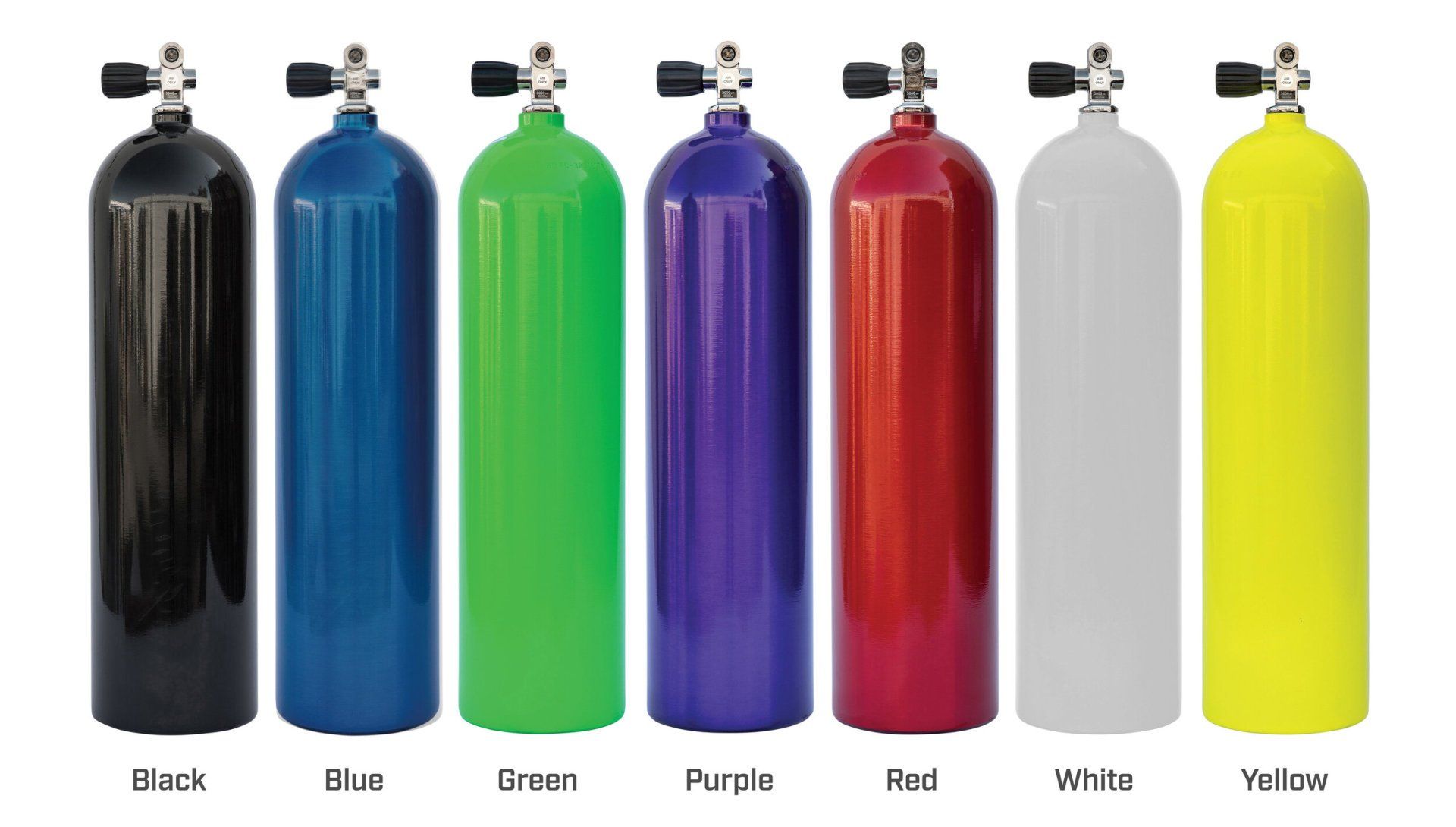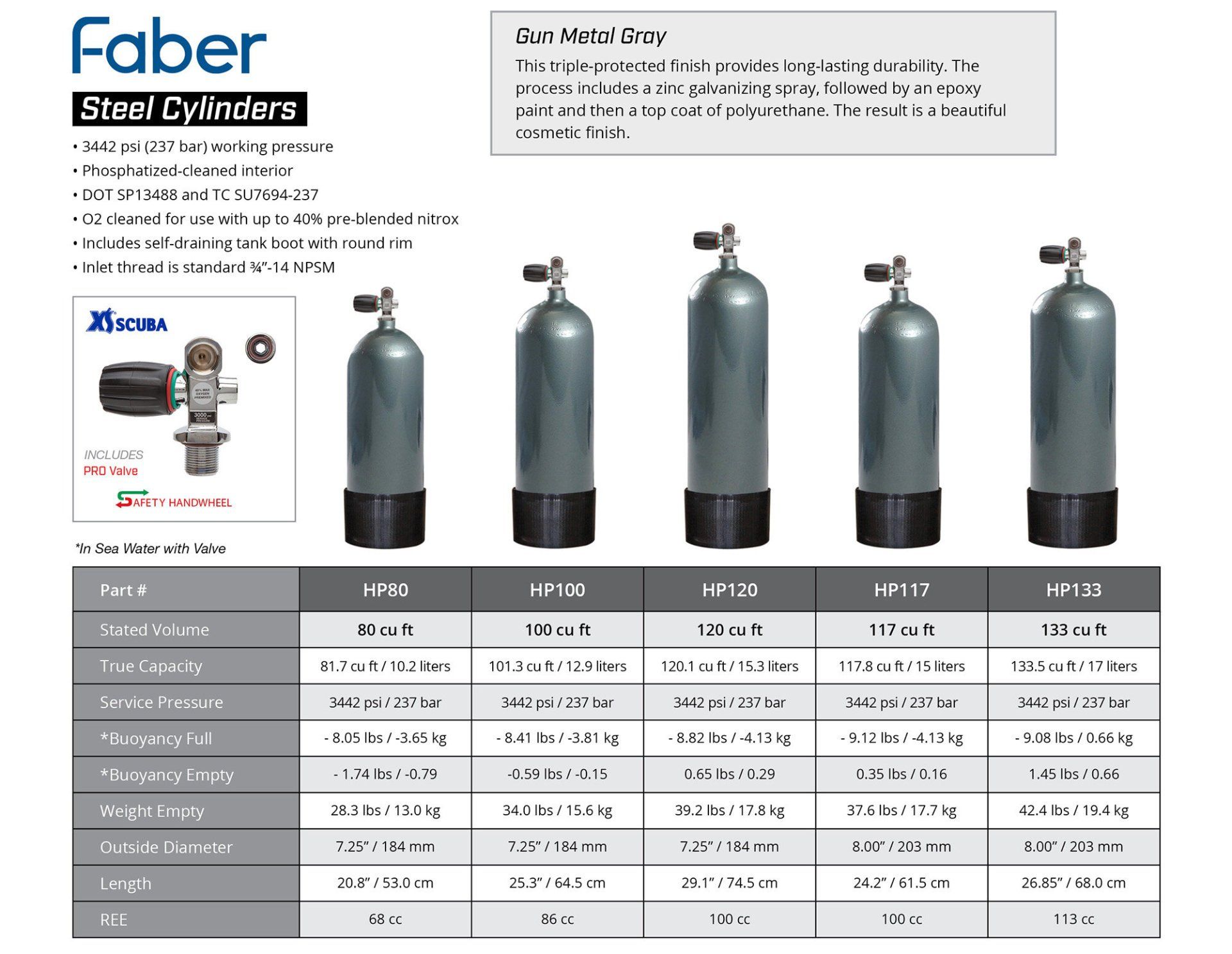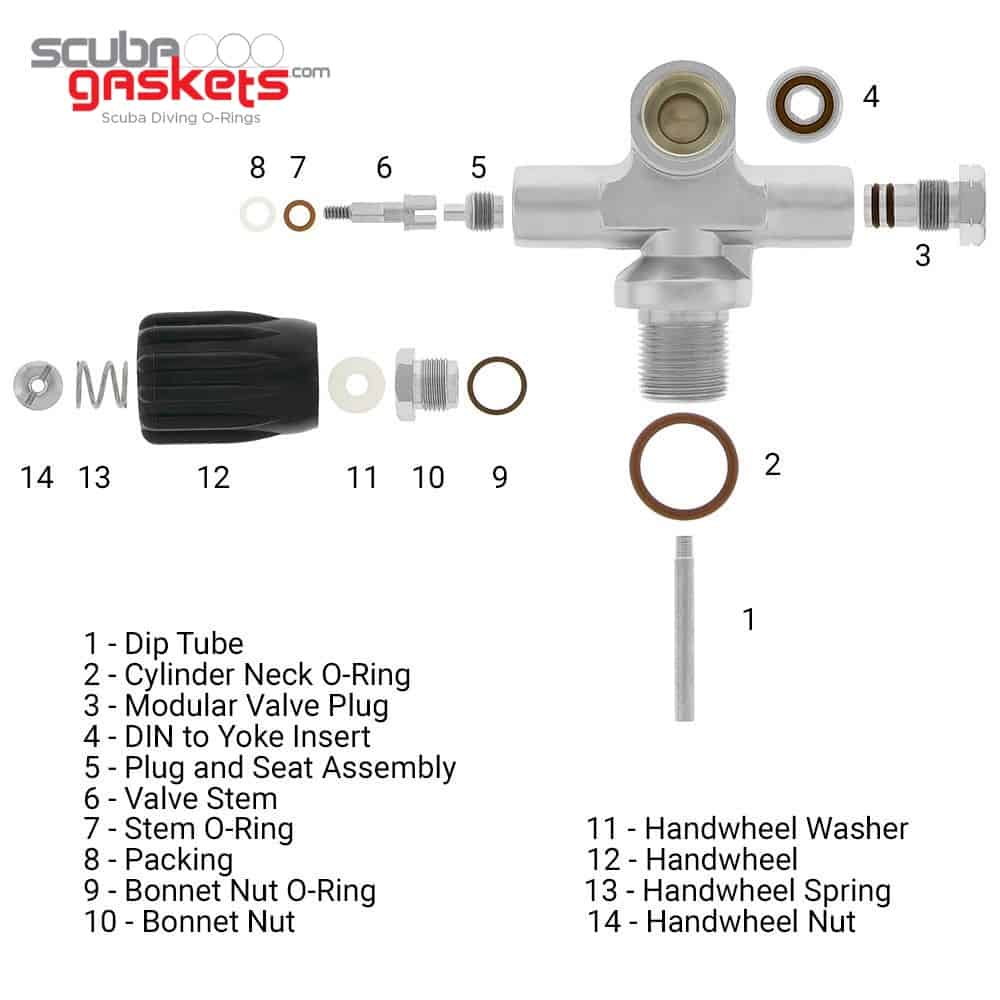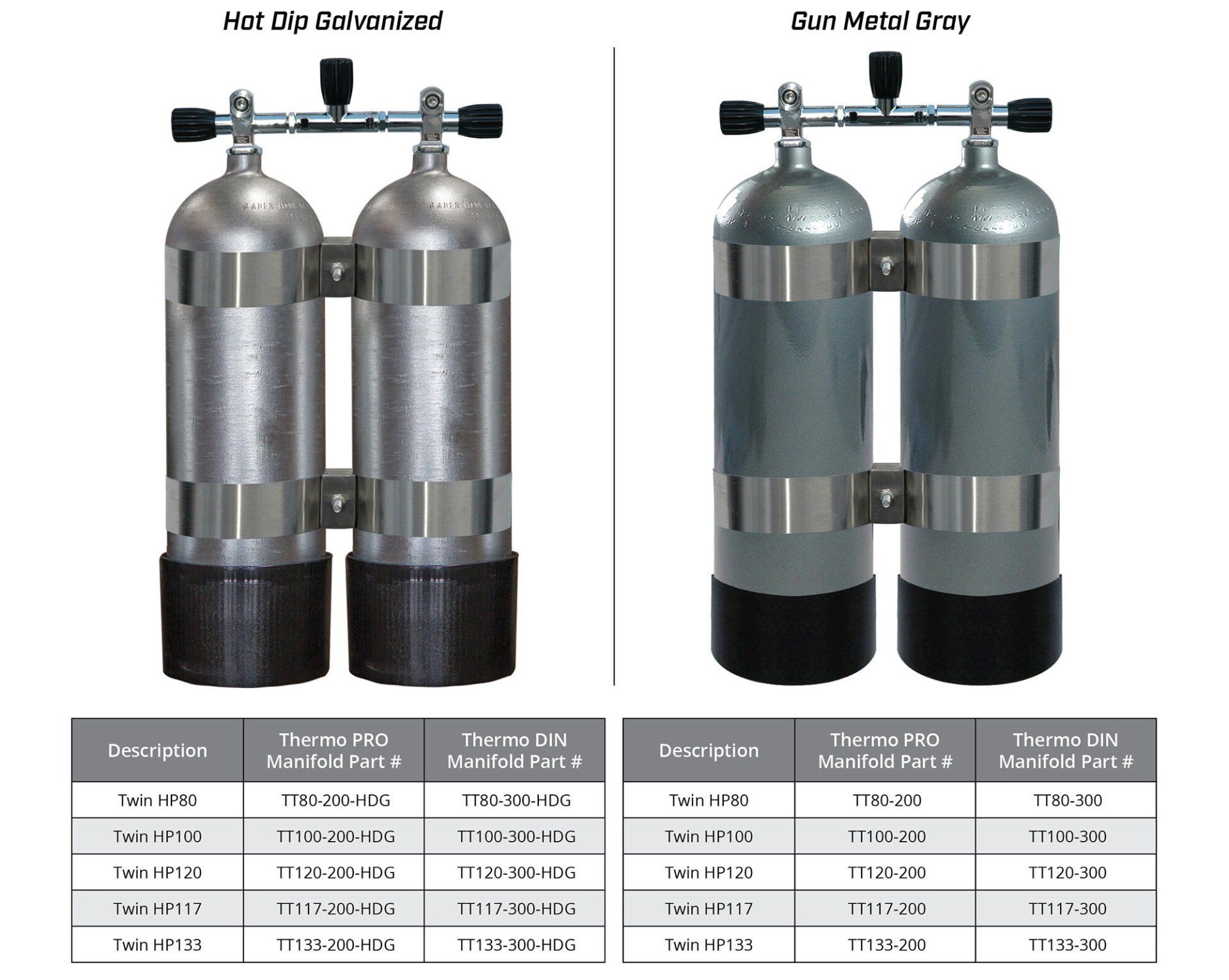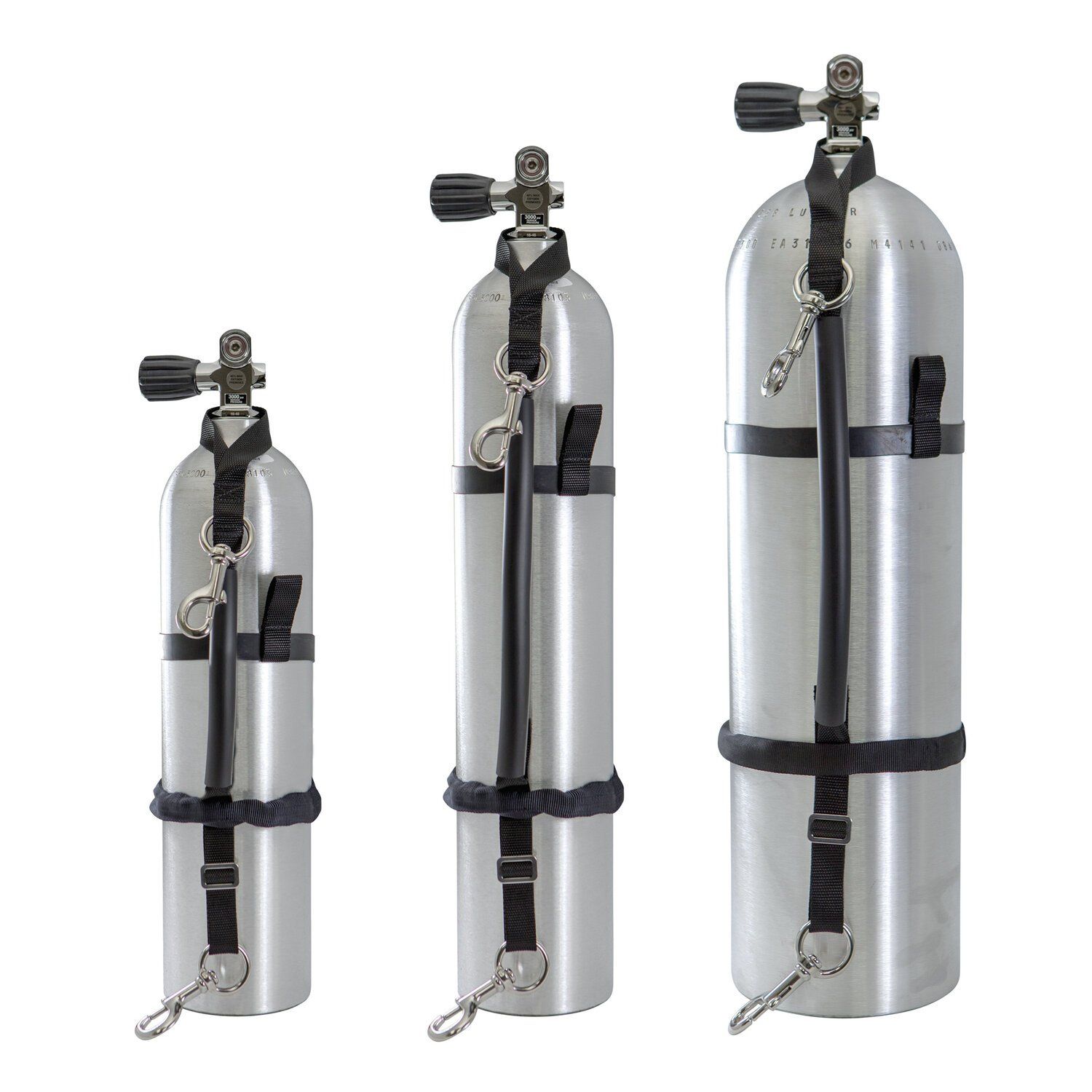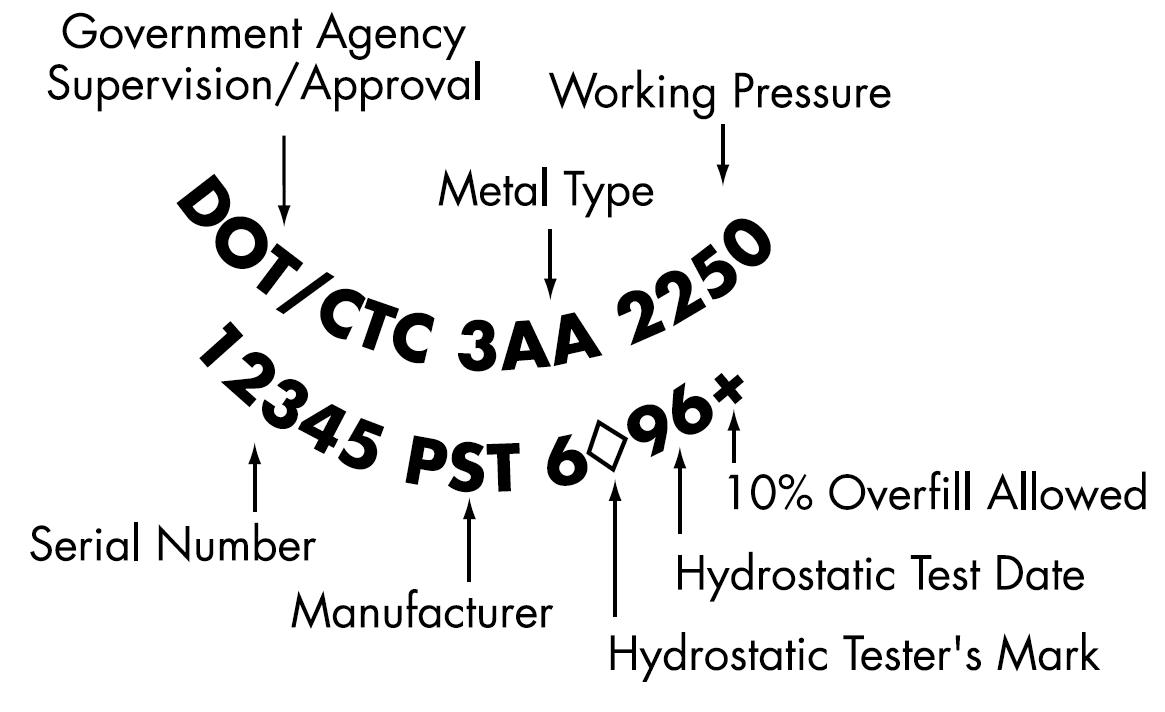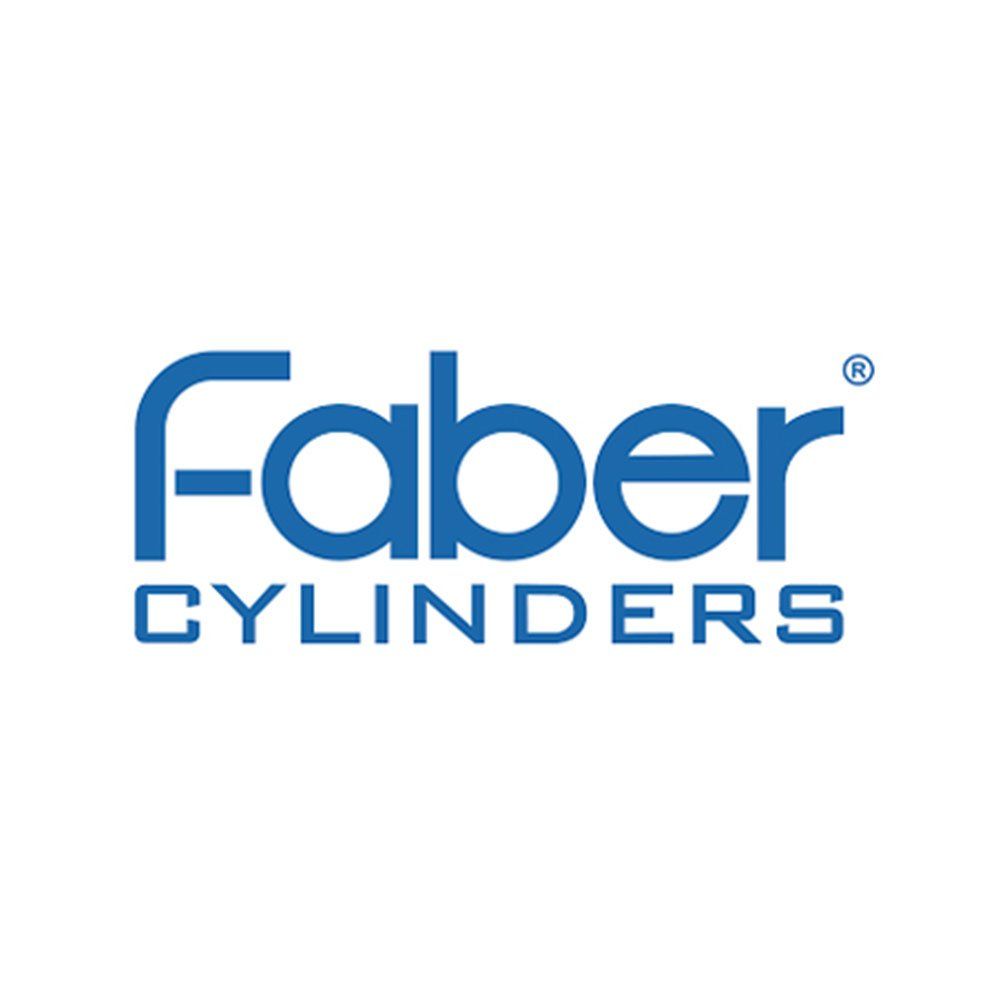We offer a full range of recreational, professional, and technical diving courses all year long!
Purchase Tanks and Accessories
Tanks, Cylinders, and Valves
Tank Sizes and Pressures
It's not the size of your cylinder that matters. It's the volume! In many countries and regions of the world volume is measured in liters and pressure is measured in BAR. In the United States we express volume using the measure cubic feet and for pressure use pounds per square inch or PSI. The most common tank used in the United States for recreational diving is an 80 cubic foot aluminum tank with a working pressure of 3000 PSI. In Europe this tank would be referred to as a 10 liter tank with a working pressure of 200 BAR.
Working pressure is important. A cylinder is not "full" unless it is filled to its working pressure. You might have an 80 cubic foot tank, but until you put 3000 PSI of gas in it you don't have 80 cubic feet of gas to breathe. Working pressures can range from 2250 PSI for low pressure steel tanks to 3440 PSI for high pressure steel tanks.
Here is a basic guideline for tank volumes:
13 - 19 cu ft : pony bottle, redundant air source
30 - 40 cu ft : stage bottle, redundant air source
50 - 63 cu ft : primary air source for a child or small adult
72 - 100 cu ft : primary air source for an adult
104 - 130 cu ft : primary air source for a large adult (also used in technical diving)
Aluminum vs. Steel
Aluminum tanks are more common and less expensive than steel tanks. However, steel tanks are catching on in the United States because divers have discovered how much more bang for your buck you get with a steel tank.
Steel is denser and stronger than aluminum so a higher volume steel tank may be smaller or weigh less than a similar aluminum tank. The high pressure steel 100 is actually smaller than the aluminum 80 and has 20% more volume! This is a great tank for local divers, divers who need more volume because they have larger lungs, and drysuit divers that have to work a little harder underwater and have to use some of their air to maintain buoyancy of their dry suit.
Steel tanks also have great buoyancy characteristics because they are negatively buoyant even when they are empty. If you feel a little "floaty" at the end of your dive it might not be you. It might be your tank! An aluminum tank might be as much as three pounds positively buoyant at the end of the dive. That means you're wearing more weight just to keep your tank underwater. When switching to a steel tank divers often remove 3-4 pounds from their weight system.
Yoke Valve vs. DIN Valve
Yoke valves are the most common form of valve found in the United States. DIN valves are found primarily in the middle east and Europe. However, DIN valves are becoming more popular in the United States - especially with technical divers.
A yoke valve is designed to be used with a yoke regulator. The regulator sits on the outside of the valve and is tightened with a yoke screw behind the valve. The o-ring remains in the tank valve when the regulator is removed. A DIN valve is made to be used with a DIN regulator. The o-ring that seals the regulator to the tank is part of the regulator, not the tank. DIN regulators are less likely to leak because the o-ring is protected in between uses. A DIN regulator screws into a DIN cylinder valve from the front of the valve.
There are different kinds of DIN valves, primarily low pressure and high pressure. These valves are designed for a certain working pressure and should not be moved from a low pressure tank to a high pressure tank. The valves can also have different thread counts and thread pitches so not all DIN regulators will work with all DIN valves.
A common valve sold today is call a Pro Valve or a Conversion Valve. This valve is handy because it can be both a yoke valve and a DIN valve. It is essentially a DIN valve with an insert or "donut" screwed into the valve that converts the DIN valve to a yoke valve. The insert is easily removed with a hex wrench.
Isolators, Manifolds, and Bands
There are some unique valves still in the market today. H-valves and Y-valves allow you to connect multiple regulators to the same tank. Left and right valves allow you to change the position of the valve handles making it easier to manipulate them in a side-mount or back-mounted double configuration. Technical divers often use a steel band kit to "twin up" two tanks. The tanks then receive a left and right valve with an isolator manifold connecting the two together. When the isolator valve is open the two tanks act as one and the pressure remains equal between the two tanks. When the isolator is closed the two tanks act as independent tanks. This is extremely valuable if a tank valve or regulator develops a leak. The isolator can be closed, isolating the leak, and the diver will only lose air from one tank.
Accessories
There are many ways to accessorize a tank. The most common include colored valve caps, tank nets, and boots. Most aluminum tanks are flat-bottomed tanks and will stand up on their own. Most steel tanks are round-bottom tanks and require a tank boot in order to be stood upright. Tank nets help protect a tank from scuffs and scratches. Valve caps either go over the top of the tank valve in the case of a yoke valve, or screw into the valve in the case of the DIN valve.
Redundant Air Source
Redundant air sources are often referred to as pony bottles or stage bottles. They are a separate tank and regulator that a diver carries in order to have a backup or reserve breathing gas supply. They are often designed to be removed or staged by the diver in case the diver can't carry the extra tank for the entire dive (common with wreck diving) but can be semi-permanently attached to the diver's primary tank. This is a popular configuration for solo or self-reliant divers that are carrying the extra air source in lieu of diving with a buddy. Stage kits, strap kits, and bolt kits are used to rig the tank to meet the divers needs.
Cylinder Markings
It is important to learn a little bit about cylinder markings. These markings tell you what kind of tank you're looking at. Is it steel or aluminum? High pressure or low pressure? When was it last hydrostatically inspected. A tank must be hydrostatically inspected once every five years and visually inspected once a year. Hydrostatic inspection dates are stamped into the metal of the tank shoulder. See below for a quick review of cylinder markings.
1001 W. Anderson LaneAustin, TX 78757
Business Hours
- Mon - Fri
- -
- Saturday
- -
- Sunday
- Closed
Contact Us
Thank you for contacting us.
We will get back to you as soon as possible.
We will get back to you as soon as possible.
Oops, there was an error sending your message.
Please try again later.
Please try again later.
SITEMAP
1001 W. Anderson LaneAustin, TX 78757
Business Hours
- Mon - Fri
- -
- Saturday
- -
- Sunday
- Closed
© 2024
All Rights Reserved | Scubaland AdventureWebsite Design & SEO Services by TECHsan Media LLC


